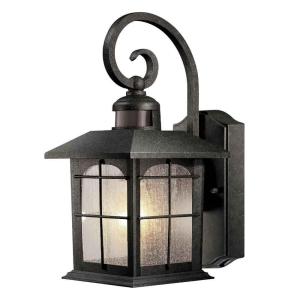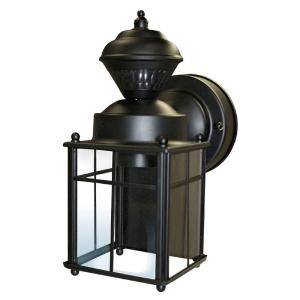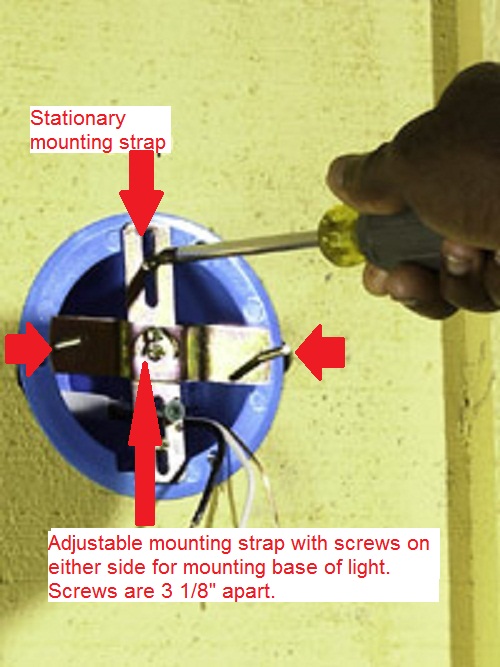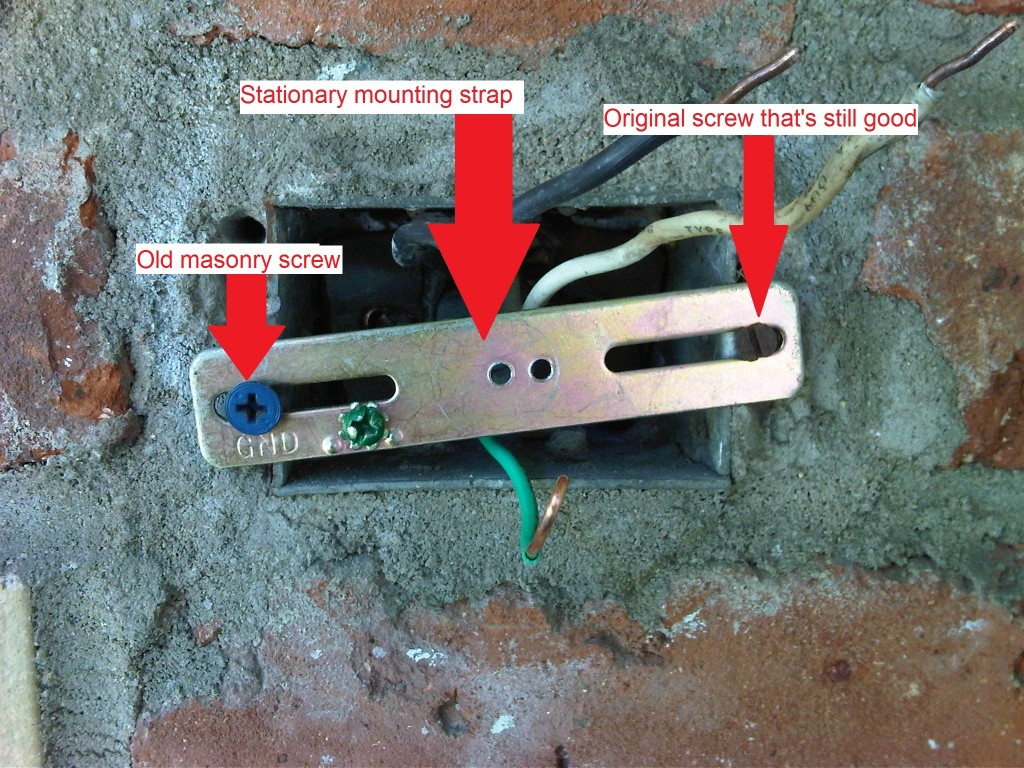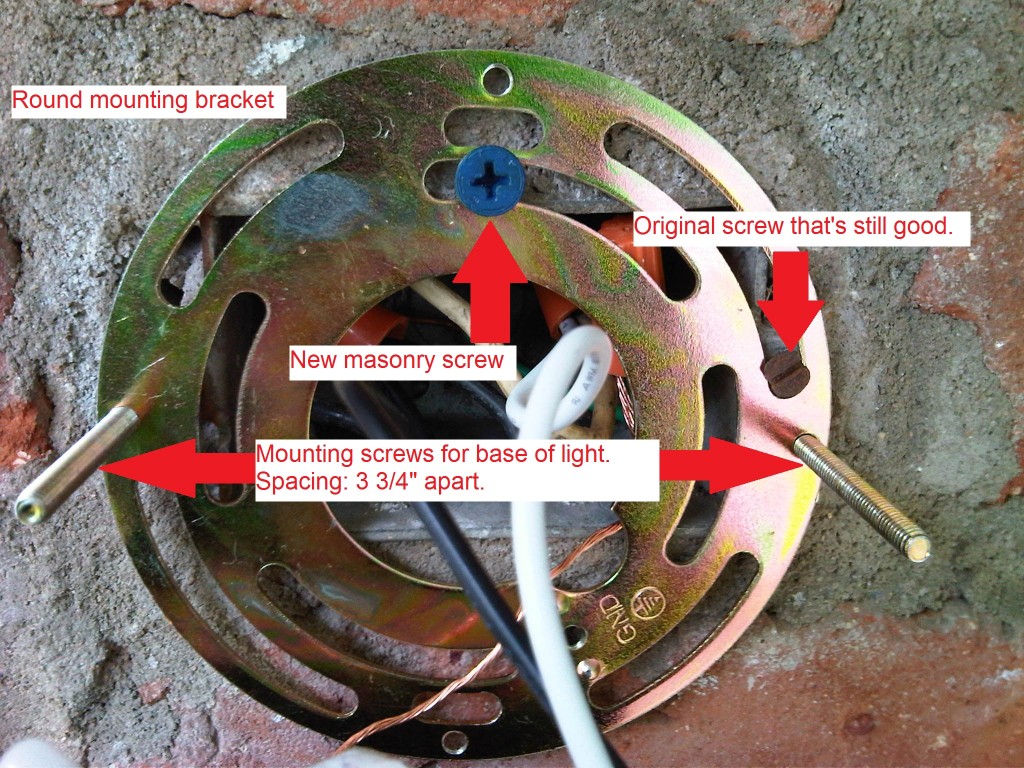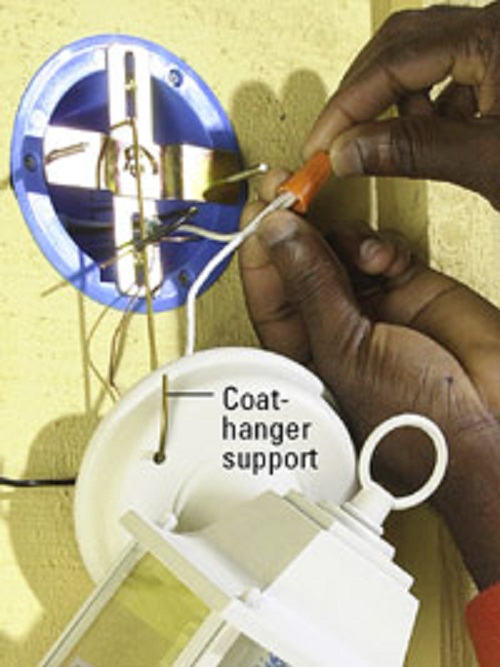Replacing a Porch Light and Review of Two Porch Lights
2010-09-14 Initial Post
OVERVIEW
I recently replaced my front porch light. There wasn't anything wrong with it; I just wanted one with a motion sensor. I went to Home Depot and first got a Hampton Bay model. The installation was pretty easy since it used the same type of rectangular mounting straps as the existing light. But the only major problem with this light was its motion sensor. Even with the sensitivity set to high, it would not turn on the light until I was really close, which wasn't acceptable to me.
I returned the Hampton Bay and got a Heath Zenith model, which I originally was going to get but the smaller size made me go with the Hampton Bay, which was bigger. But since the Hampton Bay's motion sensor was terrible, my only other option at the Home Depot was my original choice of the Heath Zenith.
So I went to install the Heath Zenith and realized that it used a round mounting bracket instead of the rectangular mounting straps. The holes for the light base mounting screws on a strap are spaced 3 1/8 in apart while on the bracket they are 3 3/4 in apart. After some fiddling around, I couldn't find any way to keep the existing straps and make them work with the new light. But the major problem I had was that I couldn't easily remove the stationary mounting strap because the left junction box screw was rusted and broken and someone had haphazardly put a masonry screw in to hold the left side of the strap. (All this writing about mounting straps and brackets might seem confusing, so I've put some pictures and more information about them at the bottom.)
Since I didn't want to mess around with drilling any additional holes into the masonry, I decided to put back my old light and use the Heath Zenith at my mother-in-law's house. The installation at my mother-in-law's didn't go as smoothly as I expected it to, but I eventually got it installed and was very impressed with the motion sensor's sensitivity and the fact that the sensor itself could be physically adjusted.
I still wanted to replace my porch light, so I thought about it more and decided that I was willing to drill holes into the masonry if that's what it took. I went back to Home Depot and bought another Heath Zenith along with Tapcon 3/16 in x 1 1/4 in concrete anchors (masonry screws). I also bought the Tapcon carbide-tipped drill bit designed for use with the specific anchors that I bought.
I drilled two holes for the masonry screws using an 18v cordless drill. I ended up only needing to use one of the holes since I was able to get a secure mounting with one new masonry screw along with the original screw on the right side of the junction box. Drilling into mortar was tricky because the bit would slip a little bit before it grabbed and wasn't as forgiving as wood. The masonry screw didn't hold into the hole as tightly as I'd like, probably because I should have used screws longer than 1 1/4 in.
In the end, the light looks good and works, and no one can see how it was mounted. It might not be the prettiest mount job, but it works. Also, since the light is under the porch and won't get fully exposed to the elements, I'm fine with the way it's mounted. If the light was directly out in the open, I'd spend more time and mount it more securely.
I'm going to wait a few weeks before I caulk around the base of the light. I don't want to caulk it now and then run into a problem in a week and have to take everything back out.
REVIEW OF PORCH LIGHTS
Hampton Bay 7 In. Aged Iron Finish Outdoor Wall Lantern with Motion Sensor; Model # HB7251M-292; $59.97
Pros:
- Grand design.
- Large size.
- Seeded glass.
- Installs with mounting straps.
- Has selection for light to turn on at dusk for 6 hours.
Cons:
- Motion sensor position inadequate for use as a front porch light. If you think about it, most front porch lights (in my area at least) are installed at least 6 ft high and most porches are elevated and require at least a step or two from the walkway. So based on that, the light is going to be sitting at least 7 - 8 ft from the walkway. Looking at the motion sensor on this model, see how it just faces straight out. I think that's what keeps it from properly working on a front porch.
Heath Zenith 150 Degree Bayside Mission Lantern with Clear Glass - Black; Model # SL-4132-BK; $34.97
Pros:
- Cheap.
- Good motion sensor sensitivity.
- Physically adjustable motion sensor.
- Motion sensor is angled downwards, which makes more sense for use on a front porch.
Cons:
- Does not have selection for light to turn on at dusk.
- Uses round mounting bracket, which was not good for me, but it depends on what you currently have installed.
NOTES ABOUT MOUNTING STRAPS AND BRACKETS
I had seen the rectangular mounting straps used for other lights such as ceiling chandeliers and thought that it would be standard for all porch lights. But it turns out that some porch lights use a round mounting bracket.
This is a good picture of some mounting straps. The "stationary strap" is actually screwed into the junction box. The "adjustable strap" screws onto the middle of the stationary strap and can be easily adjusted for levelness. Note that the stationary strap doesn't have to be mounted vertically as shown here.
Here's the stationary strap on my front porch light junction box. It's mounted horizontally in this case. The left screw on the junction box had been rusted out and broken, so someone had put a masonry screw in. Note that even though this strap is not level, the adjustable strap (I had removed it for this picture) would get screwed onto it and could be adjusted for levelness.
Here's how it looked after installing the round mounting bracket. I only had to use one new masonry screw to keep the bracket secure.
CLOSING COMMENTS
I don’t know why I didn’t think about this before, but I probably could have bought an adjustable strap that was wider and would have the 3 ¾ in spacing for the light base mounting screws. That way I could have left the stationary strap in place and wouldn’t have had to buy the masonry screws or drill bit.
Come to think of it, my mother-in-law’s porch light junction box had the wider strap. I’m an idiot! I should have followed my own advice. Duh!
What a smart idea to use a coat hanger to support the light while wiring it. Too bad I didn't find out about this until after I had installed two porch lights. I'll use this technique next time, for sure.
